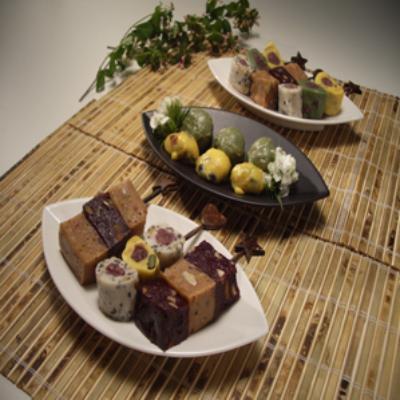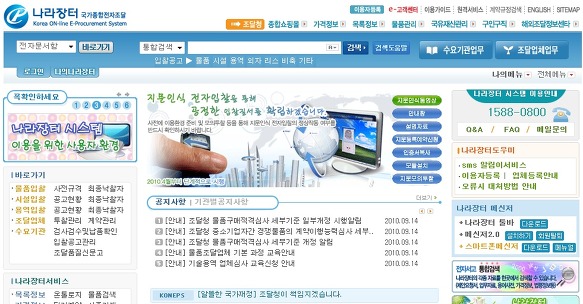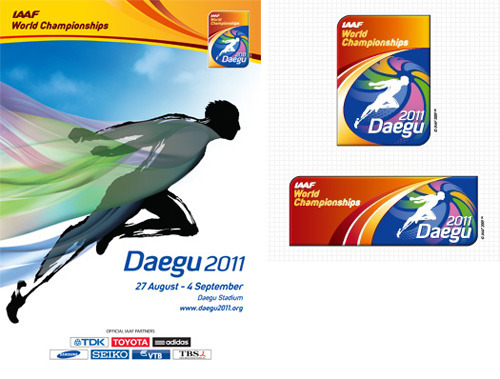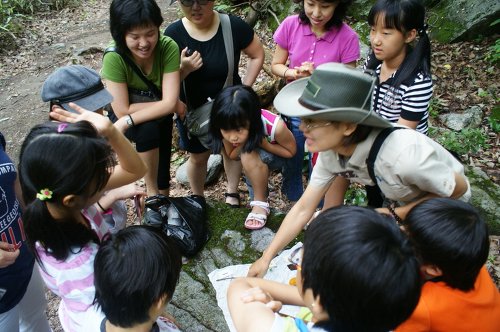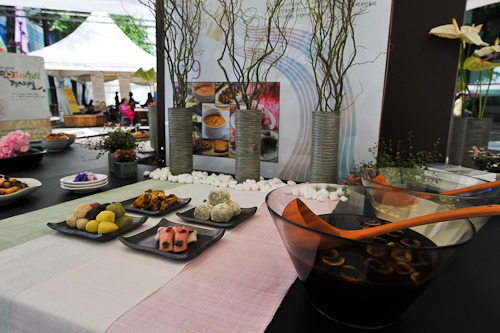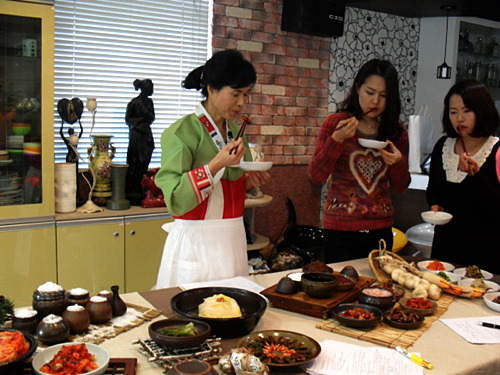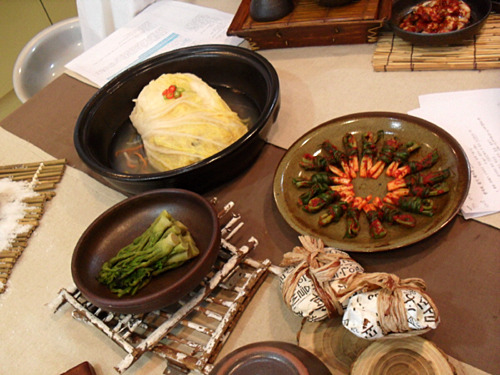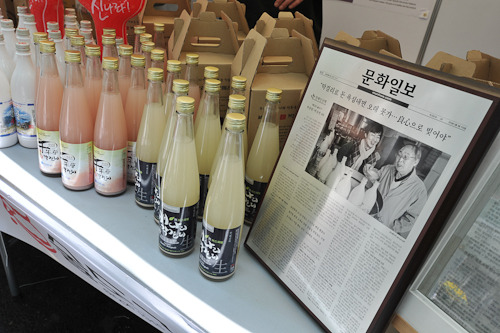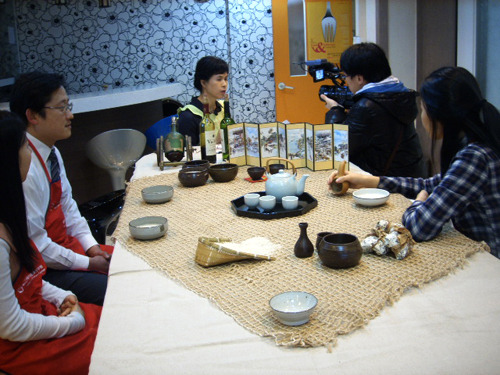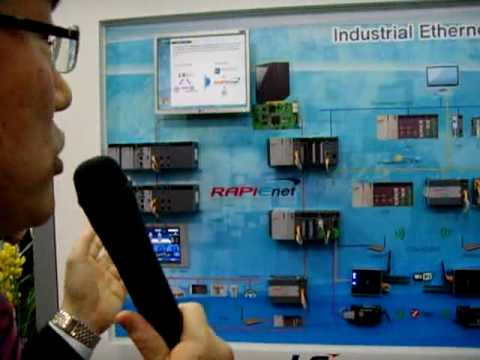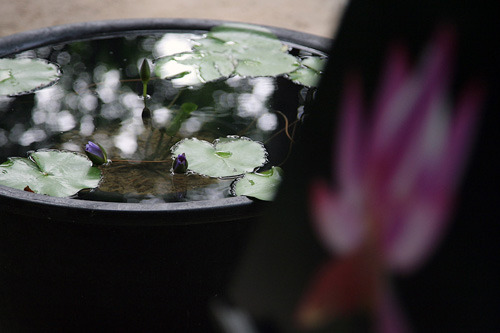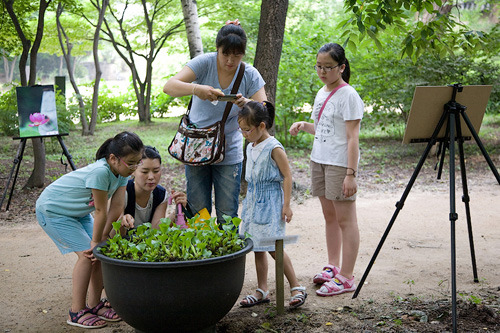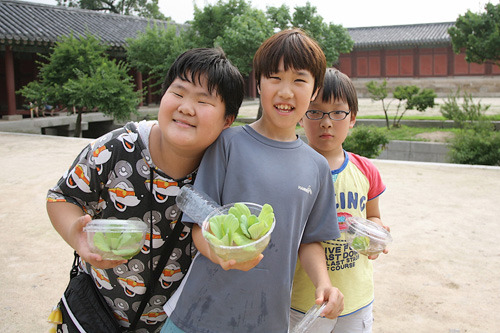Saturday, December 4, 2010
1 Malaysia = 1 Quota System = 1:3:6 Lean Concrete Mixture = 一个混凝土
Monday, November 1, 2010
Paris 浪漫之都 - 巴黎
Friday, October 22, 2010
From the G7 to the G20

Article referred to
http://www.seoulsummit.kr/eng/goPage.g20?menu_seq=G20MENU00061&return_url=TOP02_SUB01
From the G7 to the G20
The G20 was formally established at the G7 Finance Ministers’ meeting on 26 September 1999. The emergence of the G20 stemmed from the changing economic reality – a response both to the financial crises of the late 1990s and to a growing recognition that key emerging countries were not adequately included in the core of global economic discussion and governance.
So, the original G7 (composed of the US, Japan, United Kingdom, France, Germany, Canada and Italy) grew to the G20. At the third G20 summit held in Pittsburgh on September 24-25, 2009, the G20 was designated as the premier forum for international economic cooperation. Today, the G20 represents two thirds of the world’s population and nearly 88% of the world’s economy.
Who are the G20 and their heads of state?
The G20 includes 19 countries and the European Union.
* G7 : US, Japan, United Kingdom, France, Germany, Canada, Italy
* 4 Asian Countries : Republic of Korea, China, India, Indonesia
* 3 Latin American Countries : Argentina, Brazil, Mexico
* 4 European Countries : Russia, Turkey, Australia, the EU Chair
* South Africa and Saudi Arabia
To view details of the G20 countries including their leaders, click the following link :
http://g20.korea.net/html/g20/members.asp
Who else will participate in the Seoul Summit in addition to the G20?
Korea will invite 5 non-member countries and 7 international organizations to the G20 Seoul Summit (scheduled for November 11-12) that have close relationships with the agendas of the summit.
The 5 non-members are Malawi, Vietnam, Spain, Singapore and Ethiopia, and the 7 international organizations include the United Nations, International Labor Organization, World Bank, International Monetary Fund, Organization for Economic Cooperation and Development, World Trade Organization, and the Financial Stability Board.
Non-G20 member countries have been invited to previous G20 summits in order to enhance the effectiveness and representativeness of the meeting.
Saturday, October 16, 2010
The Fascinating World of Hangul Calligraphy
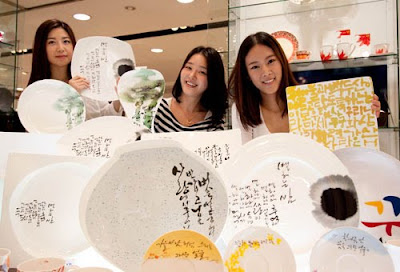


Article picked from http://blog.naver.com/korea_brand/10095749968
Are you familiar with calligraphy?
There is a growing interest for hangul (the Korean alphabet) not only as a set of alphabets but also as an artistic theme. Known for its highly scientific and pragmatic nature, now hangul is being re-discovered as calligraphy (the art of fancy lettering) as well as applied as a fashion component.
In calligraphy, letters transform into something unique, one-of-a kind, and creative that reflects the emotions of the particular theme that the words denote. Used in the poster for “Festival” (a film directed by Gwon-Taek Lim), hangul calligraphy is now used everywhere, far and wide, from movie posters, book jackets, record covers, to product advertisements etc.
Calligraphy on the Web
Calligraphy is gaining popularity in the online world as well. Breaking away from the uniform Microsoft fonts, web users are now turning to more original letterings and do not hesitate to make a purchase for calligraphies to use for their blogs and homepages. It is estimated that annual volume of font purchase is over KRW 10 billion.
Cyworld, the widespread web site that offers mini homepages, sell 20,000 fonts daily, and introduces new fonts everyday that are customized to meet users particular wants and demands. Fonts that apply the handwritings of celebrities such as Yuna Kim are particularly appealing to the customers.
People Love Hangul-themed Fashion
Lie Sang-Bong is one of the most well-known Korean fashion designers who is especially acclaimed and recognized for his hangul-themed works. His range of work includes not only clothes, but accessories, electronics, and home appliances as well. Lie incorporates hangul usually written vertically, aptly conveying traditional Korean flavor at the same time as keeping it modern and suave.
Hangul-themed design is gaining further vitality with the efforts of Dong-Eui University in Busan, which established “Han Fashion Center” in 2006 with the support from the Ministry of Knowledge Economy.
The Han Fashion Center launched its own brand called “Hooga” and undertakes various activities such as exporting design carpets abroad and supporting some 130 local companies that lack design capacities. The center aims to create design products that capture the characteristic beauty of hangul – the harmony between its lineal and curved lines.
Hangul, created by King Sejong, is now being re-created in the hands of designers.
As you may have noticed, last October 9 was Hangul Day in Korea. It was a day for us to ponder the value and beauty of the great Korean alphabet, especially in these times where there is an unbridled deluge of foreign languages, ugly slangs and obscure jargons in our everyday communication.
Benefits of Red Ginseng


Article picked from http://blog.daum.net/korea_brand/781
Autumn is here now in full swing. As the saying goes, you can see “the sky getting higher and horses getting plump.”
In these crisp, pleasant days, are you one of those people who feel always sleepy and somewhat lethargic, dozing in the bus and missing your stop?
If you are, then I’d like to introduce you to a certain health food: Red ginseng.
Red Ginseng Prevents Swine Flu
When the H1N1 swine flu virus swept the nation last year, the sales of ginseng and red ginseng skyrocketed as well. People believed there is nothing more effective than Korean ginseng in increasing immunity against flus. Not totally ungrounded, but still there hadn’t been sufficient scientific study to back up such an argument.
Now, more about ginseng has been unveiled at the 10th International Symposium on Ginseng held on September 15. The results of a research on the effectiveness of ginseng in preventing H1N1 were announced. According to the study, the group who took ginseng along with vaccination had a 40% higher survival rate than the group who took only vaccination. Red ginseng, in particular, was found to boost up defense against not only H1N1 but seasonal flus as well.
An experiment was conducted with 227 participants at three medical offices in Milan, Italy. Half of them were given ginseng at a dosage of 100mg daily, the other half placebo. The results showed a significant decline in the frequency of colds and flus in the treated group compared to the placebo group (15 versus 42 cases).
Red Ginseng Also Reduces Fatigue and Prevents Cancer
Other benefits of red ginseng include reducing fatigue, improving blood circulation, and getting rid of fat and cholesterol.
Red ginseng also helps quench thirst, especially for diabetics who urinate a lot to get rid of the extra sugar in their blood. Also, red ginseng is good for enhancing your stamina in general. Those who often catch cold and never have enough energy might as well give it a try!
The size of the domestic red ginseng market, currently, is about KRW 1 trillion. And with the increasing consumer demand, it is expected to further grow, as much as six-folds within a few years. In addition, as an increasing number of foreigners are taking interest in the benefits of red ginseng, there is to be a lot more export and branching out into global markets.
Well, it seems like red ginseng is all that is good! Why not brace up ourselves against the vicious seasonal flus with some help from red ginseng? :)
Sunday, October 3, 2010
A New Better Way to Make Korean Rice Cake
I love traditional Korean rice cakes (called “tteok”). Some people eat rice cakes in the morning as a grab-and-go breakfast while some others eat them to lose weight as a dietary food. These days, there are so many new kinds of rice cake, made from some unusual ingredients with new techniques.
I’d say the most appealing thing about rice cake is its texture, its soft chewiness. And thus, one of the most baffling things about tteok is that they lose its signature chewiness so fast. You buy some nice chunks of tteok in the evening on your way home from work, and the next morning you find them gone all hard and dry. Hard and dry, that’s not rice cake anymore. I bet you all have this sad experience.
And here is some good news for you! A new technique has been developed that can make tteok that preserves its chewiness for a long, long time.
No more hardened rice cake
Korea’s Rural Development Administration (RDA) developed a manufacture technique that prevents rice cake from going hard and dry. With this new recipe that involves no chemical processing or additive whatsoever, you can now enjoy the soft chewiness of rice cake for a long, long time. They call it “miracle” rice cakes since if you store them in the fridge, once defrozen they will restore their original chewy texture but completely.
RDA developed a manufacture technique that prevents rice cake from going hard and dry.>
According to RDA, the soft, moist, chewy texture comes from beating rice cake a numerous number of times which produces microscopic, elaborate structures within. And RDA managed to convert this beating into an exacting, scientific process.
In Korea, rice cake is a “must” item at special feasts like holidays, birthdays, kick-off ceremonies etc. And since rice cakes turn hard and dry so easily, tteok manufactures, when there is a large order, have to wake up at the break of dawn and start making rice cake right on the day it’s needed; they can’t do it earlier. That sure is a tough labor. Also, rice cake’s poor durability and difficult storage has been detaining vitalization of the tteok industry. But now with the new technique, things will start looking up, including increased rice consumption.
Time for rice cake to go global
Now that we’re striving for globalization of Korean food, rice cake can be one of the key items, especially with the new technique. Compared to bread, rice cake is healthier, more digestible, and can fill up your stomach. With the new technique, RDA announced that they’re expecting to generate1.3 trillion won worth of economic value. They plan to get the technique (which they named “cool tteok recipe”) patented soon and start putting it to practical use.
Let’s look forward to days when rice cake will be more popular than bread!
Korea’s Online Procurement System Going Abroad
The Public Procurement Service (PPS) is one of Korea’s central administrative bodies that provides public institutions with materials, facilities and services from supplying companies that they need. With the rapid spread of the Internet and Korea’s advanced level of Information Technology, the nation’s procurement system, also, is going online. Furthermore, a growing number of developing countries where issues of budget waste, lack of transparency and corruption are considerable are trying to import! and benchmark Korea’s online e-procurement system.
|
Procurement officials overseas visit Korea to learn
Korea International Cooperation Agency (KOICA) conducted a training program “Public Procurement System Establishment” for 18 participants from 8 countries including Uzbekistan, Egypt, Morocco, Ghana, Tunisia, Senegal, Cote d’Ivoire, and Uganda. From September 2 to 18, the participating officials took various courses on the strategy for establishing the e-Government and e-Procurement system.
Korea exports e-procurement system to Costa Rica
Costa Rica’s e-procurement system which opened in July 2009 was constructed by Samsung SDS for USD 8.3 million. Recently, a total of 9 systems were launched including the electronic bidding, security/authentication, electronic contracts, electronic payments, electronic documents, document distribution and others. Samsung will support the operation until December and then transfer the controls over to ICE (Instituto Costarricense de Electricidad).
With the introduction of the system, the Costa Rican government will be able to operate efficiently through integration, standardization of procurements. Also, it is expected to contribute to the transparency of procurement and the efficiency of the bidding companies.
Laura Chinchilla, President of Costa Rica said, “I am very pleased because the e-procurement system improves the efficiency of public institutions and provides high-quality services of government agencies; it provides equal benefits to all the citizens.” She also thanked South Korea’s embassies and Samsung SDS for their efforts in making the successful launch.
Through the project to spread Korean online procurement system to foreign countries, Korea’s software and IT consulting companies are accumulating their know-how on overseas projects and improving their international competitiveness. Also, efforts are being made to make the Korean e-procurement system a global standard.
Not so many people are aware Korea has an advanced procurement system like this. Promoting it to the world must surely be a way to raise Korea’s brand value!
Wednesday, September 15, 2010
IAAF World Championships Daegu 2011
There are several sports that Korea excels at: taekwondo, archery, judo, and weight lifting to name a few. But in athletics, unfortunately, Korea has rarely won medals and accordingly, public interest, too, is rather modest.
But next year, it seems it may be quite different – for the IAAF (International Association of Athletics Federations) World Championships is scheduled to be held in Daegu, Korea from August 27 to September 4. Those who run the fastest, jump the highest, leap the farthest will be all gathering together!
So the 27th of August 2011 is the day it will begin. Following the 1988 Olympics and the 2002 World Cup, this time Korea will host the IAAF Championships, with some ambitious goals set for itself – ranking within top 10 in 10 categories, including marathon, race-walking, hurdles, pole vault, and javelin throws for both male and female.
Organizing Committee for the IAAF World Championships Daegu 2011
The organizing committee for the Daegu Championships is working hard to make the event a success. They are repairing and upgrading the Daegu Stadium which will be the main venue for the games, and the Athletes’ Village where the athletes from all over the world will be lodging is scheduled for completion in April 2011. About half has already been completed. Also, some 6,000 supporters are being recruited, including interpreters, assistants and organizers in some 10 specific areas.
Now that slightly less than a year is left till the grand opening, the tickets are on sale both on and offline. The price of the tickets ranges from KRW 10,000 to 150,000 and the season ticket with which you can watch all of the competitions costs from KRW 200,000 to 850,000. The prices are cheaper than the ones at the Osaka Championship in 2007 or Berlin in 2009.
A Mega-Scale Sporting Event
The IAAF Daegu 2011 will be the second time the competition is held in Asia, following the one in Osaka, Japan in 2007.
It will be a mega-scale sporting event where over 6,000 foreigners from 213 countries will visit and participate in 47 different games. Apparently, it is a major opportunity to showcase various attractive aspects of Korea. Apart from the actual visitors, there will also be some 7 billion TV viewers, which will induce an impressive amount of economic value. To host this championship, Korea needs KRW 5.5 trillion’s volume of manufacture, 60 thousand employments, and is expected to generate value-added of 2.3 trillion’s worth.
Hosting a sporting event of this magnitude is certainly no easy job. It requires a lot of resources both finance, energy, time-wise, not to mention a thorough, meticulous planning. The entire world will be watching Korea. So, let’s hope and strive for a successful hosting!
Perfect Time to Visit National Parks of Korea!
The stifling heat of the summer has somewhat simmered down and we can now feel a hint of autumn seeping through the air. If you’re planning an autumn vacation, I’d say you should definitely go for the mountains.
Around this time of a year, Korean mountains exhibit splendid foliage. National parks at such mountains as Seoraksan, Naejangsan, Songnisan and Wolchulsan will be perfect spots for enjoying wonderful Korean autumn sights. In link with this, there is a TV program that introduces beautiful mountain scenery of Korea.
Korea’s Nature as Seen by Foreigners
There are around 20 national parks in Korea, all of which boast exceptional natural beauties. 38 million people visit the parks annually, and they are home to some 60% of endangered species. So it’s hardly an overstatement to say national parks are the very core of Korea’s ecology.
In an effort to promote Korean natural sights to the world overseas, the Korea National Park Service produced a TV program that introduces Korea’s national parks in cooperation with Arirang TV, an English-language TV channel that has viewers from more than 188 countries including the US, Canada and the UK via satellite.
In the program, foreign reporters visit the parks and go on “eco-tours”, introducing the sights from the perspective of non-Koreans. For example, at Dadohaehaesang National Park, the largest national park in Korea which expands across seven coastal areas in the South and West Sea, reporters get hands-on experience on drying anchovies, or at Odaesan National Park they get to unearth potatoes.
The program is made up of 20 episodes, each of which is about 10 minutes in length. It will be aired at 7:30 pm (Korean time) every Saturday on Arirang TV.
Various Education & Entertainment Programs
We may think national parks are just nice, peaceful tourist spots with a bunch of mountains and creeks and trees and whatnot bundled up together. Well, maybe so. But recently, many educational and entertaining programs are being offered for those far too many city-bound children and life-jaded adults.
For example, at those national parks near the city such as Bukhansan National Park, they have built an “eco village” where city kids can explore nature, get an education on environment and also receive treatment for environment-related illnesses such as asthma or atopic dermatitis which as many as one quarter of children suffer.
Also, since national parks house many of endangered species, children can take actual glimpses at those precious fauna and flora that they’ve only seen on the pages of books. For example, Byeonsanbando National Park houses the very rare insect “chrysochroa fulgidissima,” or in another term, “jewel beetle.”
So, why not take your autumn vacation at one of these splendid national parks?!
Tuesday, August 31, 2010
Ever Heard of Sommeliers for Korean Food?
Ever Heard of Sommeliers for Korean Food? 2010/08/26 17:45 |
A few years back, there was a big wine boom. Wine was the trendy thing. And so was the word “sommelier.” It is a French word meaning a trained and knowledgeable wine professional who specializes in all aspects of wine service – wine procurement, storage, wine cellar rotation, providing expert service to customers and so on.
Well, you will be surprised to hear that there exist sommeliers for Korean food now. Last October the World Food Culture Center (WFCC) introduced its first sommelier course for kimchi and makgeolli in an effort to globalize hansik – traditional Korean food.
Ms. Hyang-Ja Yang, the CEO of the WFCC, commented, “Kimchi is Korea’s representative food, designated by the New York Times as one of the world’s top 5 health foods. Korean food has numerous benefits – nutrition, taste, and style-wise – and is something we can pride ourselves on.”
Ms. Yang went on to emphasize, “But we’re not making enough effort to promote and globalize hansik. There isn’t enough “story-telling” nor attempts at fusing Korean food with other food culture.”
Mr. Wan-Soo Park, Director of World Kimchi Institute (organization under the Korea Food Research Institute), said in his interview last March, “The fact that kimchi is such an ingrained item in Korean people’s lives is partly the reason why there is an insufficient amount of research on systemizing it.”
Kimchi is something that Korean people eat almost every meal, and Korean households make a load of kimchi every winter almost like a ceremony. Despite its subtlety of taste and a very storage-sensitive nature, there is hardly enough standardization of kimchi-making. Much of how-to-make-kimchi has been handed to the next generation by telling and showing without relying on set recipes. Lack of industrialized processing as well as special wrapping that accommodates fermentation and long-distance delivery has been deterring global distribution of kimchi. The same situation goes for the traditional Korean liquor, makgeolli.
Ms. Yang of the WFCC says, “A kimchi sommelier should be well-equipped with expertise on kimchi and cooking skills, and should be able to provide all kinds of information regarding the dish. The kimchi sommelier course comprises 12 classes in the span of 3 months. The course also teaches you skills that keep the wrapping from bursting while kimchi is fermenting.”
To be a good kimchi sommelier, you should be skilled not only at ensuring and preserving the quality of kimchi, but also at story-telling of kimchi. Ms. Yang says, “To do that, education on the theory of Korean food culture is essential. And with the suitable food styling we can shape the impression of Korean food as classy and elegant as well as generate value-added. Also, developing fusion dishes that blend Korean food with other food cultures will be conducive to globalizing hansik.”
In the makgeolli sommelier course, aside from being educated on the manufacturing, preservation, styling of the liquor, you also learn about its drinking culture such as drinking etiquette or how to shake makgeolli before pouring it and so on.
“In countries like Vietnam that are familiar with rice, makgeolli is regarded as a high-class liquor. And the curry-flavored makgeolli is especially well-received in India. It has a nice color, too, style-wise. We can produce any number of variations of makgeolli that combine various countries’ specialty flavors,” Ms. Yang explained.
“Maintaining a stubborn attitude that doesn’t allow room for incorporating other food cultures won’t work. To globalize Korean food, we ought to be open-minded about and respectful of dishes of other countries. Take Japan’s sushi, for example. Sushi is now made and sold by as many Koreans, if not more, as Japanese people. For effective globalization of hansik, we should get rid of the thinking that Korean food must be made by Korean people, nobody else.”
Mr. Tae-Pyong Chang, the former Minister of Food, Agriculture, Forestry and Fisheries said in his celebratory speech at the International Food Industry Exhibition Seoul 2010, “The size of the global food industry is USD 4.3 trillion, 5.6 times that of the IT Industry, and 2.5 times that of the automobile industry. It is a huge, huge market. And globally, countries are endeavoring to raise their competitiveness and take leadership in the food industry.”
Korea, too, is making efforts far and wide to promote Korean foods such as kimchi, makgeolli, and tteokbokki. For makgeolli, in particular, the goal has been set at USD 10 million volume of export for this year.
“If people get to be familiar enough with variations of Korean food, then they will eventually want to delve deeper and trace back to the food culture in its original. That will stimulate export of Korean food ingredients as well as attract foreign visitors. And by offering hansik sommelier courses, more Korean people will get to be well-versed in expert knowledge of Korean food, which I believe will contribute to the sustainable development of Korean food culture,” Ms. Yang says.
Saturday, July 31, 2010
The “Ethernet” Technology
The “Ethernet” Technology 2010/07/28 12:58 |
Have you heard of the term “Ethernet?” Not Internet, mind you, but Ethernet. Well, I suppose it’s not exactly in our everyday vocab list.
Ethernet, stemming from the physical concept of the “ether,” refers to the computer networking technologies for local area networks (LANs). In simpler words, it is a system where multiple computers scattered far and wide can form a network and share information. This system is widely used in the banking or trading industry that operates hundreds of branch stores.
Traditionally, the Ethernet market has been dominated by advanced countries such as the US, Japan, and Germany. But recently, Korean industrial Ethernet technology has been adopted as an international standard, marking a milestone for advancing into the world market.
Let’s learn a bit about this Korean Ethernet technology.
Faster and Easier to Fix
According to the Ministry of Knowledge Economy of Korea, the International Electrotechnical Commission (IEC) approved of 5 RAPIEnet (Real-time Automation Protocols for Industrial Ethernet) technologies developed by Korea’s LS Industrial Systems. They passed the Final Draft International Standard (FDIS), which means that it is almost at its last step in becoming the international standard (IS).
LS Industrial Systems has developed RAPIEnet as a new industrial communications bus for use with its PLC (Power Line Communication) systems. The company says that in so doing the design has avoided the complications of hubs and switches and the accompanying excessive cabling required by established Ethernet technology.
RAPIEnet, while still compatible with the preexistent Ethernet standards, transmits data at a 1 GB-per-second speed and in case of a communications failure can repair the error 30 times as faster. It can be utilized in a variety of fields operated by automation systems such as semi-conductor and automobile manufacturing, or nuclear energy development.
Korea, the Forerunner of the Industrial Automation Technology
RAPIEnet is the fruit of the collaborative efforts between LS Industrial Systems and Hanyang University – corporation and academia. The volume of tangible and intangible profit generated by this technology’s approval as an international standard is incredibly huge. It laid the groundwork for Korea to advance into the global market of USD 10 billion’s scale. Also, the domestic market, worth of KRW 150 billion, which has so far been dominated by the USA, Germany, and Japan, is expected to be finally claimed back by the Korean technology.
It is also important to note the significance of the collaborative R&D efforts between corporations and schools, backed up by the government support. Korea will surely continue its endeavors to generate world-acknowledged brand-new technologies.
Spend the Summer at the Royal Palace
Spend the Summer at the Royal Palace 2010/07/28 12:57 |
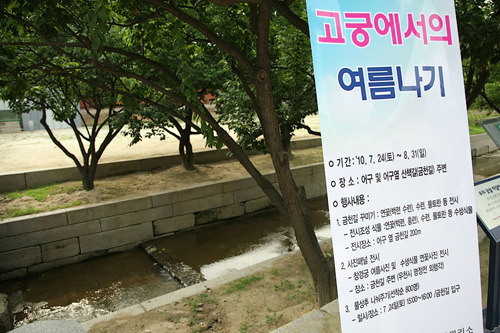
An event titled “Spending the Summer at the Royal Palace” is being held from July 24 through August 31 at Changgyeonggung Palace. Let me introduce it to you.
Upon entering the palace you will be able to see a banner in front of euhgoo (a stream flowing from a royal place) that traverses the palace.

The clear stream euhgoo flows along Geumcheon path with pleasant, gurgling sounds, and you can take a rest in the shades drawn by the lush trees planted along the path. The path is also adorned with a variety of aquatic plants such as lotuses and water lilies as well as twenty-some photographs.
<Euhgoo flowing along Geumcheon path>
You can spot friends, lovers, families here and there, as well as foreigners visiting Korea. There are kids on a field-trip with the assignment to observe water lilies and hyacinths. There are members of a photography club on an outing. The various aquatic plants with their beautiful features and purifying qualities grab people’s attention for a long time.
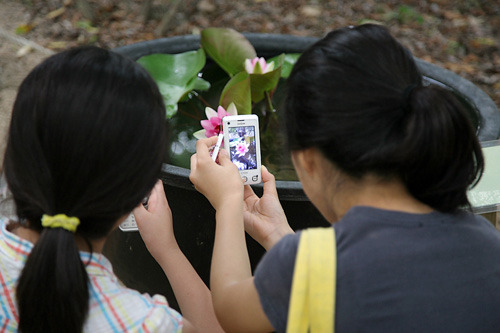
On the first day of the event, water lettuces known for their pollutant-fighting, purifying capacity were given out as a souvenir.

In the olden times, there were purported to be 8 ways of fighting the heat of the summer. According to Jeong Yak-Yong, a leading Korean philosopher in the late Joseon Dynasty, the 8 ways were :
1) Playing Baduk sitting on a cool bamboo mat
2) Practicing archery on a platform of pine trees
3) Playing the traditional Korean game of Tuho (throwing arrows into a jar)
4) Riding swings in the shade of a zelkova tree
5) Listening to the cry of cicadas in the forest
6) Writing poems on a rainy day
7) Washing feet in the moonlit night
How about trying a little vacation at Changgyeonggung palace, hmm?
Give it a try!

